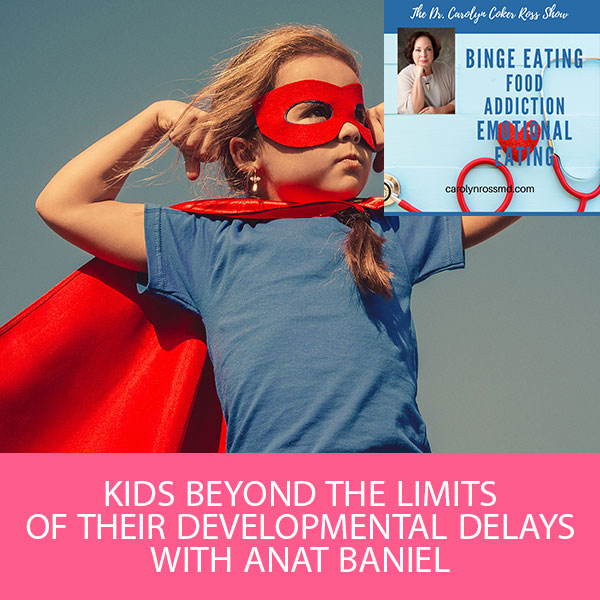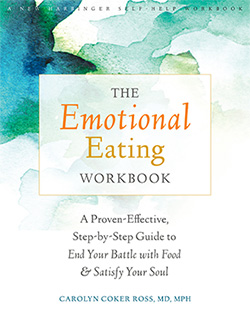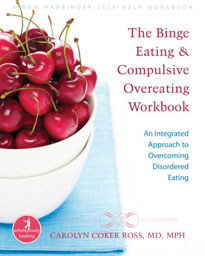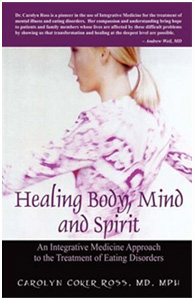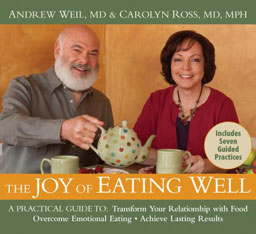
—
Listen to the podcast here:
Kids Beyond The Limits Of Their Developmental Delays with Anat Baniel
We’re going to be talking about an important subject. This is about a book called Kids Beyond Limits. My special guest is Anat Baniel. She was born in Israel and trained by the legendary, Dr. Moshé Feldenkrais. She has established an international reputation for her work with children with special needs. Anat is a clinical psychologist who has refined her method for many years. She runs the Anat Baniel Method facility in Marin County, California, which draws students and clients from around the world. She is also the author of a book called Move Into Life. You can find out more about her books and her work at www.AnatBanielMethod.com. Welcome to the show, Anat.
Thank you for having me.
Your book, Kids Beyond Limits, is amazing. In the book, you’re talking about the work that you do with children who have autism, Asperger’s, brain damage, attention deficit and other types of developmental delays. What drew you to working with special needs children?
Initially, I didn’t even intend to work with them. I wrote about it in my first chapter. I encountered a child with special needs while traveling and assisting Dr. Feldenkrais. I was very young and he was a lot older. He observed how I was with that child and he started referring kids to me and then it grew very quickly. There was something about connecting with those kids and seeing them transform in small and big ways that the parents started asking for my work and I just did it.
It sounds like it was serendipitous that you had that experience with the little girl named Elizabeth that you talk about in your book.
It was quite remarkable because she had an extremely green prognosis of global brain damage. In those days, the parents put her in a facility away from home because she was never going to do anything like talk or walk or anything like that. There was little she could do. She was crying all the time. Her eyes were crossed. She couldn’t roll over. You couldn’t put her on her belly. Even when she was a year old, she screamed. Quickly, she started changing. There were two lucky things. One was that I realized it’s about the brain and it’s somehow about recruiting the child’s brain to be able to do its own job better. The other one is that I had no training in how to work with children. I had no preconceived ideas of what’s possible and what’s not possible. I went for seeing changes in learning. All I wanted to see was some learning, some change because once there is learning, I knew that there will be progress.
[bctt tweet=”Once there is learning, there will be progress.” username=”CarolynCRossMD”]Did you work with her for a number of years?
I worked with her over a period of twenty years. In the beginning, it was intense. She was thirteen months old when we started with her. Pretty soon, Dr. Feldenkrais got ill and he couldn’t work with her anymore. Not too long afterward, he passed away. I worked with her a lot in the beginning and then as she could do more, I kept working with her but not as frequently. By the time she was a teenager, they would come out to California twice to three times a year for three, four days. It was specific issues, get a few lessons, she’d get through them and then live her life. She went to a regular school. By the time she was school age, I estimated she would be able to handle a regular classroom, which she did. It wasn’t that she was perfect, but she was strong enough cognitively and physically to do it. She has two Master’s degrees from esteemed universities. She’s married and she has her own business.
That comes from the prognosis being that she should be put into a facility for disabled children to being a fully-functioning adult.
Also a beautiful one. She’s bright. We email when it’s needed. I got her permission for the chapter in the book. She made some suggestions with. When I stopped working with her, I wasn’t using email at the time. We couldn’t have even envisioned something like that but it’s quite remarkable.
You mentioned that you trained with Moshé Feldenkrais. How long did you work with him? What are some of the principles of his method?
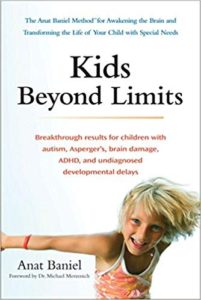
Kids Beyond Limits: The Anat Baniel Method for Awakening the Brain and Transforming the Life of Your Child With Special Needs
I studied and worked with him over a period of eleven years. I started doing his work as a child through my dance teacher. The principles that I talk about, I’ve taken everything I’ve learned from him and he was a remarkable genius. I was beyond lucky and I’ve profound gratitude to have had the chance to study with a man of his caliber and his foresight. The principles I described are how they’ve evolved for me over the years and they’re more my definition in the Anat Baniel Method. What I’m going to be speaking to is my principles, The Nine Essentials.
Tell me a little bit about the difference between what he was doing and what you evolved into doing. There are still Feldenkrais practitioners around.
There are some practitioners that are doing great work and they’re from those training. It’s a totally wonderful thing. With your permission, I would love to speak as to what I do rather than compare, especially if the audience doesn’t know either one.
Let’s go on to talk about a little bit more about what you do. First, I wanted to ask you a question. You work with kids who have been diagnosed with a wide range of disorders, autism, Asperger’s and so on. In your book, you speak of many of these cases and how many of them have gone onto lead pretty normal lives. Does this mean that their original diagnosis was incorrect? How do you view that?
Almost always the original diagnosis is correct. Elizabeth, eventually when they did an MRI, later on, they found that she has a condition called cerebellar hypoplasia. It’s a structural deformity and she’s missing a good percentage of her cerebellums. With that degree of this condition and the way she presented when she was a year old do end up being oftentimes profoundly disabled physically. They don’t get to stand, walk, talk or cognitively too. A lot of the children that have the stroke or have cerebral palsy, the diagnosis is accurate. From my point of view, they still have a potentially, extremely brilliant, good brain that can become a brilliant learner. In other words, the difficulty is real. The diagnosis is real. However, often if you start doing with a child what is needed for that brain to be able to correct course, it grows new connections and it grows new possibilities. Certain areas in the brain take over and then form the patterns that are needed, but it doesn’t happen on its own. The brain depends on its own experience for future development. If you have a baby that doesn’t move, it’s spastic, it’s in pain. It’s not doing the usual random movements and all kinds of different experiences a healthy child has. The brain simply is lacking the information with which to work and trying to make the child that which it should be doing is often a losing proposition because if the child could, they would. It’s a question of providing the brain with information it’s missing because of the condition, the disease, the injuries and the brain damage, whatever it may be.
That’s a profound shift in looking at how those children are usually treated. You’ve explained a little more in detail in your book where you talk about how traditional, physical therapy is often prescribed for children especially with spasticity and so on. That is trying to get them to do something that their brain doesn’t know how to do. Is that what you’re saying?
Yes, absolutely.
[bctt tweet=”Movement is the opportunity for the brain to get information and to self-organize. ” username=”CarolynCRossMD”]Let’s go into your method. I hope your book is being read by millions of parents who have children with these disorders because it gives a degree of profound hope that there could be a change for children such as these. Let’s talk about the nine steps that you have in the Anat Baniel Method. In the first step, movement with attention, you referred to Daniel Siegel’s work at the University of California, Los Angeles in mindfulness. Can you say a little bit more about how mindfulness feeds into what you do with children in that first step?
To begin with, I would like to mention that without movement, nothing happens. Einstein perfectly said nothing happens until something moves. People feel physical movement versus the mind, but thinking is a form of movement and emotions are definitely a form of movement. Movement is life. Movement is what I labeled or called the language of the brain. Movement is the opportunity for the brain to get information and to self-organize. That means to create connections and patterns and then manage and control the body and the emotions and thoughts and so on. The brain goes through an apprenticeship process. The baby’s born pretty much with no voluntary action at birth for humans. It takes a long time. It takes a good twenty days and longer, sometimes 25 years for a child to become more or less an adult. Movement alone, and that’s what’s important, is not enough. Brain research shows, in this case, it was monkeys, you get them to move but you distract them, there is no change in the mapping and in the area that was moving. You get them to move a finger, they move it but nothing changes. You can think about automatic exercising or an equivalent.
The other group of the monkeys, you get them to pay attention to the finger as it moves and quick changes in the maps. That means that the area gets more and more connection. What I found in my work is that first of all, I need to move the children. If they don’t move, not much is going to happen. I do it in a way that gets the child’s attention to him or herself. It’s not attention to me. It’s not attention to a task. It’s attention to what they feel as they move and that’s where you read the stories. That’s where the miracles start happening often. People can go Google my name, Anat Baniel, on YouTube and Google Devorah and see how a paralyzed arm from brachial plexus injury, she was eight weeks old and she could never move it. At this age, it’s random movements but it never moved. In six minutes, it starts moving and you can see how you can get the eight weeks old attention while you move him, a day-old you get attention because we’re built to feel ourselves. I know you are a therapist and we’re built to feel ourselves. If we don’t feel ourselves, we don’t know anything.
We don’t even know we exist if we don’t feel ourselves. That’s where the mindfulness crosses over into what you do.
I prefer to call it attention. I’ll tell you why for the parents or therapists in our audience. Mindfulness is a general description of a whole approach and practices. Attention from my point view is an action. It’s something we do. We attend to something. We feel it. We notice that something is going on or whatnot in ourselves. I wouldn’t know how to get a baby to be mindful. To get a child to closely pay attention to what they feel, I know how to do that and I can teach others how to do that and I have.
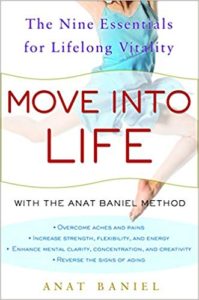
Move into Life: The Nine Essentials for Lifelong Vitality
You were going to give us a wonderful case that illustrated how you use attention in your work, getting kids to pay attention.
I saw a little boy by the name of Brooks, four years old, with pretty profound autism. He doesn’t speak and he falls a lot and he stares into space and all that stuff. He’s a sweet child and it was obvious that he was pretty afraid, so the mother sat close by and I started working with him. I want to say that my observation working with children on the autism spectrum that pretty much every single child I worked with at diagnosis has real issues with motor coordination and motor management of the brain. Even though he walks and he does everything, he’s not moving well and he’s afraid to transition and so on. I don’t know what he expected because it was his first session with me, but he was fearful. I went very slow and touched him and that comes to the other Essentials. I realized that his legs, his hips are tight. He holds them and gradually I pointed to his knees and facilitated by moving the pelvis, the chest. There’s a whole way of doing it. For the knees to start, he side-steps to pick them up a little bit, eventually peels them to the other side. The child was transfixed. I know it’s hard to grasp initially because the child is there, they’re walking. They have legs there.
You think they know they have legs, but they don’t get it that they’re there. They don’t feel themselves in any clear way. It’s blurry for them. It’s undifferentiated. Differentiation is a huge concept in my work. What happens is that he came back after the first session. The mother told me that something interesting happened that she observed the child looking at his knees at home and moving them and imitating what I did with him. He initiated experimenting and exploring the movements and the sensations. The depth of his inner experience manifested in that. Nobody asked him to do it and nobody exercised him. When you bring the child to pay attention to themselves, the transformation that’s going to happen both on the physical and the cognitive and emotional social level, it can be quite surprising. That doesn’t mean that the kid is cured. He will need a lot of work for a number of months to transition him into more of what we would call a typically-developing child. He’s certainly a powerful learner and he hasn’t been that so much.
I always find it amazing how the human body has such a capacity to do what it’s supposed to do when it’s given the right tools.
It is quite remarkable and it’s so much so that when I work, I don’t try to make the kids ever what they can’t do. On the opposite, if I feel that it’s hard for the child or they can’t do it, I back off. I know what happens in the brain when you try to get yourself to do what you can’t. You learn a lot of things you don’t want and you develop patterns that get in the way later. At the same time when I work and we do the other Essentials like variations and slow and reducing the effort and flexible goals and all that stuff. It floods the brain with information so the first organ that rights itself is the brain. I couldn’t get into the brain and yank it around. We depend on the system, on the brain to redirect it. To organize itself better, to literally upgrade the quality with which it works. That’s what we’re after, rather than try to impose a specific performance on the child.
It’s working with the child where they are and moving them forward from there rather than trying to impose a certain set of goals on them. You’re talking about movement and I want to get into the other eight steps a little bit. What’s been your experience of how the movement work affects their actual cognitive function? In the case of Elizabeth, it sounds like she cognitively is pretty normal. What about someone with autism? Many of whom have high intellect but can’t express themselves or someone with other brain issues. Do you see that movement work helping them cognitively too and behaviorally?
Tremendously, and I’m going to make a pretty bold statement. Movement is at the heart. The way I speak about movement, not the movement as an exercise where you do five times the arms up and five times the arms down. Even that can be useful but the movement is the richest, most full form. That’s where cognitive organization and evolution comes from. I watch those little babies that can’t move and then all of a sudden something starts moving and you can see their eyes and they feel it. They look and they start making connections between that movement and that outcome and their feeling and where mommy is. This is how cognition is formed. People think that movement is separate from cognition, but it’s the source of the evolution of cognition. The movement also in the sense that you feel and you sense stuff and you get the outcome as you move.
[bctt tweet=”Have the permission to love your child as they are now and not focus on what’s wrong with them.” username=”CarolynCRossMD”]I assume you’re sitting. Move your head a little to the right, a little to the left and feel how the weight shifts more to one hip and then to the other hip. The brain has to manage all of that all the time. It’s extremely complex. There’s another kid with ADD that I also started working. All the children with attention deficit disorder or ADHD, early on I observed something that I found to be the rest of the time. You get a child with ADHD, they walk, they jump and they talk. They’re a little bit off the wall. They’re agitated and they are having a hard time learning to read or write or math. The first time I got a kid like that I thought, “What can I do for them? They’re already moving.” I put the put the child on my table and I started moving their back and I realized that the back was one block. That means there’s little differentiation. They learn how to stand and walk, but it’s not as refined. It’s not as complex. The brain of the human being develops to become more and more complex. Not complicated, but complex. That means it has a lot of freedom to connect in many different ways. That’s what presented to me. I started working on this boy. He was about six years old and quickly the ribs started moving differently in relation to the spine and the hips and so on.
First of all, he started breathing better. He was moving more smoothly, the whole thing. The mother came back after a couple of lessons. The mother said, “His teachers are saying that he’s doing a lot better in class,” and they didn’t know that he was coming to me after two sessions. It’s not a simple concept but in order to write and understand what you’re reading. In order to have some mathematical thinking and understanding, it requires a certain level of complexity, of differentiation in the brain. It’s not by chance that the child that is four months old is not going to learn to read and write, even though some people try to make them do it which is a big mistake. They’re not going to do math even though they start getting some mathematical idea in terms of quantities. Research shows that. To understand numbers, we need more complexity. I got the kids who have more complexity on what people would call the physical level, but he was able to translate. That means the brain became a more skillful brain so he could then understand numbers better.
Is it an immaturity of the brain then that you saw with him?
The child is born with about 22% of the size in terms of connections and numbers of the complexity of the brain, the size of the brain. Only a fifth, and we get four-fifths by the age of three. There’s a huge amount of growth, it’s mechanical growth of more connections. It’s the relationships between the different connections that get the brain to grow. It’s the formation of the connections through experience. When a child, for some reason, whatever it is that I have no idea doesn’t allow it to happen fully, you’re trying to work with insufficient information and freedom. Back to your original question, the movement is the most fundamental, across the board way to communicate with the brain and to get it to grow and become a more mature, evolved, complex, refined system.
Do you think certain attention-focused movement systems help children? I’m thinking about things like taekwondo or Pilates where you focus on the movement of your ribs or specific hand movements. Do you think that’s helpful then to help develop the brain?
The general answer is yes. I would differentiate a little bit taekwondo from Pilates for children or judo. It depends on how it’s taught.
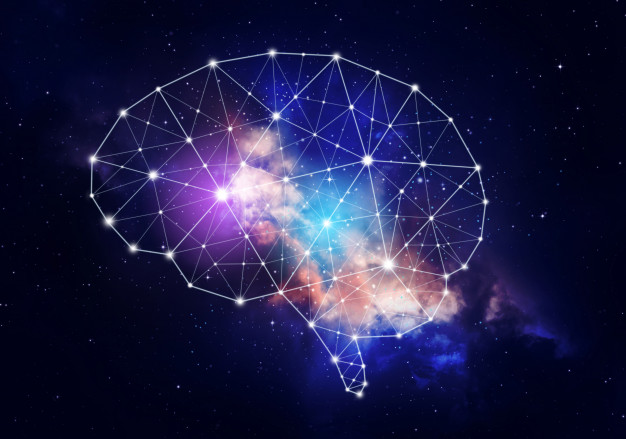
Developmental Delays: The brain of the human being develops to become more and more complex.
That’s true in the traditional way.
Martial arts are a fantastic mechanism. The kids I work with when I first get their brain to work better, it’s a bad idea to put them in another failing situation because otherwise, they will feel stupid. I highly recommend and I found a number of teachers in different cities that work with children and also children with special needs with martial arts, once I can see that they can figure out, feel their bodies and understand movement instructions and connect words to their own body and movements better. They teach it with some of the principles that I work with, the Essentials. Those kids, the first one was a friend of mine. I did some studies with him, some martial arts years ago. He would get kids that had trouble reading, writing and the way he taught them. Within three months, they were out of their problem. It’s taught according to The Nine Essentials more or less so that the brain can use it as a source of new information rather than more inhibition and more failure.
I have a black belt in taekwondo. I learned from someone who is generations in Korea who had done it from his teacher, from their teacher, so on and so forth. It was traditionally taught. What I liked most about it was that aspect of attention. If you didn’t pay attention, you could easily get hurt. The refinement of the movements wasn’t about repetitively, which is how a lot of American teachers teach it like, “Do 100 roundhouse kicks and do them now.” It was about tweaking that kick with your attention to make sure that the position was correct.
You were lucky to have such a teacher. You see what you said about those 100 repetitions. You do 100 repetitions when like how you’re doing it already. The brain can change. It’s what people call brain plasticity, but people assume that plasticity is only in the positive direction but plasticity can go in the negative direction. That means when you do a lot of repetitions, the brain does not create new connections. It grooves in deeper and deeper the existing patterns and it gives up on a lot of connections that it doesn’t deem necessary anymore. If you’re a pianist or you’re in taekwondo or whatever it is, you describe the refinement and then there are ways to accelerate this process hugely by essential variation.
Let’s talk a little bit more about your method. What are some of the other key points that you want us to know about in your nine steps?
We can only do what we already know. If we want to do anything new and I’m sure in your martial arts when you wanted to refine stuff you slowed way down. You can’t do fast and know what’s going on. The brain hijacks it into the deeper groove patterns. Anytime you want a change in your child or in yourself, you need to slow yourself down, slow the child down and then the brain immediately pays attention to what’s going on change starts happening. Variation, I want to say one thing about it. One can call it intentional mistakes or playfulness because that floods the brain with information. Instead of saying it the right way, if you think about speech therapy and you tried to drill this child to say the right thing. You get them to do a lot of different things until the brain can perceive differences and once it perceives differences it has the information to work with. When the brain gets the information it needs, research shows an estimated 1.8 million new connections per second. That’s 100 million new connections in a minute. The Essentials drive positive brain change in a powerful way. We’re going to post the YouTube of Dr. Michael Merzenich who’s a famed neuroscientist talking about why he supports kids beyond them. It’s in the work because he says he does drive positive brain change.
[bctt tweet=”If you create a hostile environment towards your client, they’re not going to thrive.” username=”CarolynCRossMD”]The fourth Essential is subtlety, the reduction of force. When we do things with a lot of force, we lessen our sensitivity and we don’t feel as we’ll find differences in what we do and then the brain gets starved of new information. It’s all about creating the conditions for the brain to be flooded with sensations and information it can work with, anytime emotional force, a cognitive force like trying to force the kid to think something or believe something or physical force or effort. If the kid has to make great efforts, for instance, to try and stand up, they’re never going to learn to stand well, guaranteed. Always create conditions where it’s easy and that’s hard for westerners to do because we are drilled into, “No pain, no gain,” and if you’re not trying hard, it’s almost morally something’s wrong with you. For the brain, it’s the opposite. If it’s easy and safe, it goes like, “I can do that,” and then it’s open to doing more. That’s what turns the learning switch on and that’s the next Essential.
Research shows that the brain can either be in a learning mode or not. When a child’s brain is not in the learning mode, it doesn’t matter what you do. They’re not going to learn. They’re going to get entrenched and somewhat traumatized emotionally or something like that, but they’re not going to learn. I talk about in the book on to how to recognize and how to create conditions where the child is actively learning. Otherwise, don’t waste your time and don’t torture the kid. Flexible goals are more for the parent than the child. The healthy kids don’t have goals. Most successful development in babies, they don’t lie on their back and say, “When am I going to roll on my belly? When’s my next developmental stage?” They are busy moving and feeling and exploring and their brain is growing like there’s no tomorrow. Unintentionally they roll on the belly, always the new thing a kid does is always surprising for them the first time. The third time is intentional. The first time is usually surprised and then they figure out what’s going on and then they can do it on purpose. Work with a kid where they are and look for learning. Don’t get too rigid about what the outcome should be because we can’t control the outcome. We can only help define the process. This book is about the quality of the process you’re creating for your child and for yourself.
I wanted to find out how are parents involved in your work. How do you work with the parents?
Now that we have the book, the parents are reading it. They reread it and they change even how they change diapers or how they feed the child or how they talk to the child or the way they play with a child. What therapy they will or won’t do for the child or what they ask their therapist how to be with their child. It’s a huge influence across the board and also many parents feel relieved because the approach in this book gets you to, first of all, connect to your child. Have the permission to love your child as they are and not focused on what’s wrong. I got an email from a mother that is a piano teacher and her daughter has some issues. She was thanking me for writing the book because she said her daughter was four or five years old. She said it’s the first time since her daughter was born that she realized that the daughter has an enormous amount of wonderful things that she’s doing and the way she is. She never saw it because she was focused on the trouble. That alone changed her life, the mother’s life, but the daughter is responding to it because the emotions travel. The energy travels from one to the other.
That relationship is the most healing thing you can do for any person no matter what.
If you create a hostile environment towards your client, they’re not going to thrive. That’s for sure. If a child’s not hostile, just the anxiety and the kids know. Once they can talk, they say they’re stupid. They feel something is wrong with them. That’s for me probably the most debilitating aspect of it all. When people feel that they’re whole and they’re well and then on top of that they learn and develop, then they can have a wonderful life. You’re a therapist. People can be walking, tangling, jumping and having all the movement and look gorgeous but inside, they feel bad about themselves and life is hard.

Developmental Delays: When we do things with a lot of force, we are less than our sensitivities and can’t grow.
Is this a book that all parents should read? Is there any benefit to healthy kids for parents to read this book?
Absolutely. Someone said to me she wants to bring this book in Berkeley to the school district and so on because it transcends. The brain is the brain and those principles support positive brain growth and development for all brains. For veterans that come back from the war in Iraq. The human brain has a unique quality. All mammal brains can change, but none as much as the human brain and none depend on brain change and learning as much as human beings. We’re built to learn and change our brain throughout life. That’s how we thrive. If you do those principles with healthy children, they’ll get brighter and smarter and it will take them less time to learn and fewer drillings, reading, writing, math, whatever it is. They’ll be a lot happier and healthier. In the end, the child can’t do the Essentials without the parent doing the Essentials. The parents have to do them in order for the child to be in the Essentials, in those nine steps. Parents also beginning evolving and growing and maturing into being more enlightened parents and that doesn’t mean they were not good parents before. As human beings, we are called upon to always continue growing and evolving in order to thrive.
Have you had any experience working with people with traumatic brain injury? Has this been successful in that arena? I would expect it would be.
The answer is a definite yes and I started doing that when I was still living in Israel. I’m going to be doing research on introducing my work. We’re going to do a pilot study with Dr. Michael Merzenich on trauma, specifically on traumatic brain injury. Definitely, the answer is yes. A lot of the babies have traumatic brain injuries, stroke or lack of oxygen or any other brain injury.
What about the effect on mood? There is a lot of research, for example, on depression and how physical activity is the best treatment for depression. Have you had any experience working with people with severe mood disorders or mental illness and whether or not that changes with your work?
I have. My background is clinical psychology. That’s the population I started with when I was inexperienced but definitely not a huge amount. That has not been the focus specifically on extreme mental disorders, but I’ve had a fair amount of that and I work a lot with the dots. I train them. I can say from my own personal experience that there’s a profound impact on my own emotional life. That’s why I know how powerful it can be. Before I did this work, I was a dancer too. Dance was important for me, but it didn’t ever have the same effect as doing this work because it’s much more drive, brain change. With the children, the most common response that we get from parents initially and then it continues is, “My child is much happier.” I’ve heard that from all the new clients. The kid I told the story about with autism, he said he loves coming here. People flew in from Hong Kong with a child with severe cerebral palsy who screamed and cried. They do pretty old-fashioned physical therapy, pretty tyrannical and the child suffered and regressed. The parents can’t believe it. He’s calm. He was sleeping in a fetal position as a result of this rigid therapy, it was unfortunate. Now he’s sleeping on his back with his arms wide open. He hasn’t slept from his belly. It transformed his whole being.
[bctt tweet=”As human beings, we are called upon to always continue growing and evolving in order to thrive.” username=”CarolynCRossMD”]I wanted to make sure that everybody knows how to access what you’re doing. There’s the book which is Kids Beyond Limits and your other book, Move Into Life. How would someone who is looking to delve more into this find a practitioner of the Anat Baniel Method?
By going to my website, AnatBanielMethod.com. There is a section on the homepage called Find a Practitioner. We have about 200, 250 practitioners that have been trained to work with children in the Anat Baniel Method. I recommend for any parent first to buy the book on Amazon. It came in a trade book. I’m happy because it’s inexpensive.
It’s a good read for people who are thinking, “I can’t read that. It’s all about the brain. It’s too complicated.” It’s not. Anat gives you lots of examples that illustrate and inspire more than anything. It’s an inspiring book.
Thank you. They can go to my website. They don’t even have to buy the book. They can download the first couple of chapters to see if they like it before they commit to more because parents are busy and exhausted and hear many things they should do. On YouTube, you can see my work and other practitioners’ work online and see if it appeals to you. If you do get the book, I know parents who practice each Essential for a week and implement it. I give examples in the book on ways you could implement it in your daily life and the different conditions and ages. If it appeals to the parents, then email our center or call. We also have a lot of people coming through the center for what we call an intensive. They bring the kid for a week and get two sessions a day for the child. Anywhere between two for 75 days, is that something that you want to continue doing for your child?
Your center is located in Marin County, North of San Francisco. I’ve learned a lot from reading your book. I’m going to read it again and send it to everybody I know. Especially those who have young children because this is important and it may help us to turn around this tide of children who are being put on heavy-duty medications and all things that may or may not be helping. I’m excited about your work. As a reminder, her book is Kids Beyond Limits. You can find out more about her at her website www.AnatBanielMethod.com. Thanks for being on this show. I want to thank all of my readers on the blog. I’ll talk to you next time. Until then, I wish you good health and vitality.
Important Links:
- Kids Beyond Limits
- Move Into Life
- Anat Baniel with Devorah on YouTube
- The Nine Essentials
- AnatBanielMethod.com
- Find a Practitioner – Anat Baniel Method website
- YouTube – Anat Baniel
About Anat Baniel
 Anat Baniel, the founder of Anat Baniel Method® NeuroMovement®, is the author of two highly acclaimed books, Move Into Life: NeuroMovement® for Lifelong Vitality and Kids Beyond Limits. Anat was trained as a clinical psychologist, dancer, and was a close professional associate of Dr. Moshe Feldenkrais for over a decade.
Anat Baniel, the founder of Anat Baniel Method® NeuroMovement®, is the author of two highly acclaimed books, Move Into Life: NeuroMovement® for Lifelong Vitality and Kids Beyond Limits. Anat was trained as a clinical psychologist, dancer, and was a close professional associate of Dr. Moshe Feldenkrais for over a decade.
In private practice, Anat Baniel is renowned for her success working with small children and infants with developmental difficulties who she has helped to achieve goals never thought possible by their medical professionals.
She has helped world-class musicians with repetitive motion injuries regain full and active careers and helped athletes to overcome injuries and reach new levels of performance. Through her work, she has helped those with chronic pain and other limitations regain full functioning. She has helped her many students, young and old, regain vitality and the ability to pursue their dreams.
Through her many years of experience working as a trainer, teacher, and private practitioner, Anat Baniel evolved her original training into a new NeuroMovement® Method that combines the teachings of Dr. Feldenkrais with her own understanding and techniques to help others and train future practitioners to help their clients in amazing ways.
Anat Baniel’s innovative NeuroMovement® method has helped thousands of people, both adults and children, from five days old to 90 years old, transforming their lives physically, emotionally, and intellectually. Her work has helped high-performance athletes, musicians, business people, scientists, and other professionals move beyond their present limitations to achieve greater energy, strength, health, and success. This cutting-edge NeuroMovement® approach has helped thousands of people suffering from aches and pains, those worn down by daily stress, and those seeking greater joy and effectiveness in their lives.
Anat Baniel’s work with children with special needs is world-renown, applauded by parents, health professionals, and those at the cutting edge of the neurosciences. Increasing numbers of leading brain scientists, medical doctors, and others in the helping professions are enthusiastically endorsing Anat Baniel Method (ABM) NeuroMovement® for her work with adults, as well as with children with special needs.

